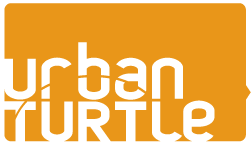How much do you adhere to Scrum? (aka presenting the Scrum Adherence Index)
Scrum is cool.
Scrum gives us enough rules to implement something that is quite easy to understand to change the process of complex products development, to optimize predictability, and to reduce risks. We all know that and we love it, don't we?
What we also know is that, despite being very easy to understand and learn, it is extremely difficult to master and implement... because we are dealing with the behavior of complex systems, and their behavior is not actually easy to change.
If I want to surf, it is easy to understand what to do with my super-light tool (the surfboard), but, unless the ocean is flat and boring, it is very difficult to respect these rules: stand up, look good, and do not fall. Easy. You just need to be strict on your rules. If you fall too many times, you might think that is a good idea to change your surfboard, but probably you just need to go and practice, sticking to the rules. Then, there are cliffs, winds, and sometimes sharks. You need to watch out and practice.
Surfing:
- Lightweight
- Very simple to understand
- Extremely difficult to master
Does it sound familiar to you?
We could consider the ocean like a massive dynamic complex system, a bit like your organization. Or maybe you are just one of those who live in a pond? In that case, no waves, no fun. And no need for surfing, I'd say.
Let's say it again: if you go for the ocean and bring your surfboard with you, you will just have to go and practice. It is the same with Scrum. However, as it is statistically proved that it is much more common to try to change Scrum than a surfboard, it is better to know what is the delta between what you are doing and what you should do. If you want to play the game of Scrum (and have fun), you should respect all the rules. We all know that, as it is written in the Scrum Guide...
Now, our questions are:
- Are you respecting the rules?
- Do you know which important rules you are not respecting?
- Do you think it is important to know or you just do not care?
If you are surfing on an ocean with big unpredictable waves, you better not be shaky on your surfboard so as not to taste sea water. We think it is the same when you are trying to use Scrum in your organization as well.
Doing so with Scrum can be challenging. The Scrum "manual" is only 16-page long, but there are many things that have to be done. If you take the official Scrum Guide (Scrum.org), you can probably find one rule per sentence, or more. Our question now is:
- How can we be sure that we are not forgetting anything important?
Here's our answer: make a checklist that you'll use for retrospection and for continuous improvement. Something like: "Did you do this? Nah. Did you do that? Yeah." Nice, isn't it?
So, we split the Scrum Guide, we added a bit of our experience on the field, and we started using it at work. We also thought to go a bit further and to transform it into an index, to verify progress. We ended up having a checklist that came up with a figure, such as: 33%, 50%, and even... 100% (wow, but probably you were cheating, weren't you?)
The name we have chosen for this tool is the Scrum Adherence Index. You can find it here and play with it. If you want to modify it, go ahead, but we would love you to share your changes here. We decided to use a license as Creative Commons, so the copyleft rule is: Attribution-ShareAlike 3.0 Unported (CC BY-SA 3.0)
Have fun and tell us what you think!
Christian and Francesco
Note 2: The index is very much like a draft. There are known issues, and surely unknown ones. Please let us know what you find (and hopefully somebody will sort them out quickly).
Note 3: In the same spreadsheet there's also a tab with a version without an index. It contains just the checklist. It can be used to have a quick vision on the practices that are used and not used and as a base to track future changes. We call it the Scrum Adherence Checklist. Original, isn't it?
Scrum Adherence Index (and Checklist) by Christian Lapointe - Francesco Lomonaco is licensed under a Creative Commons Attribution-ShareAlike 3.0 Unported License.
Based on a work at http://goo.gl/VVGY80
This content was originally published on Pyxis’ blog: Source
 Urban Turtle allows you to plan your sprints and releases, and to think about your product globally with the Product Backlog and the Product Management add-ons.
Urban Turtle allows you to plan your sprints and releases, and to think about your product globally with the Product Backlog and the Product Management add-ons.